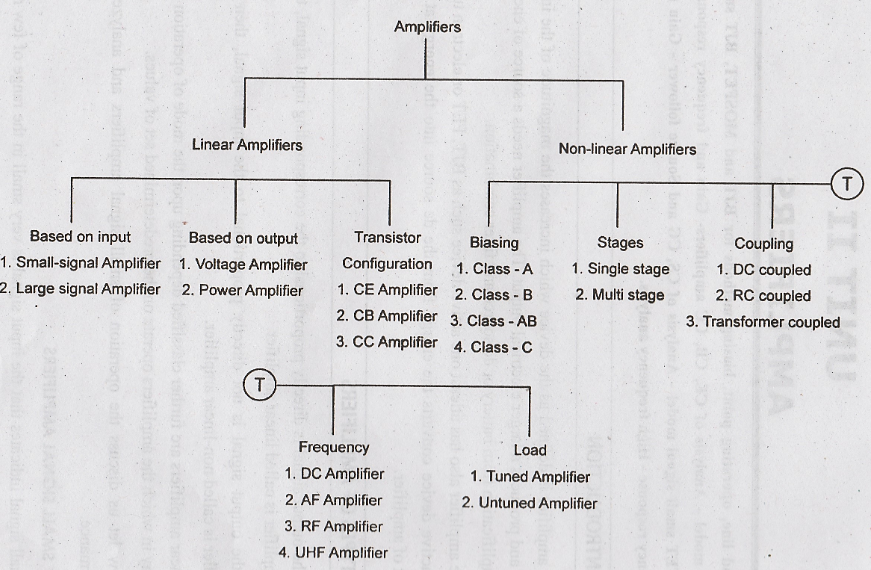Electronic Devices and Circuits: Unit II: Amplifiers
Introduction of Ampliciers
Classification of Amplifiers
An amplifier is defined as the device which increases the magnitude of the input signal and produces a larger electrical output. The amplifier needs a source of energy for amplification from battery or de source and filter combination.
AMPLIFIERS
INTRODUCTION
An
amplifier is defined as the device which increases the magnitude of the input
signal and produces a larger electrical output. The amplifier needs a source of
energy for amplification from battery or de source and filter combination.
The
amplifier also has atleast one active device such as BJT, FET or electron tube.
This active device converts the energy from the dc source into the energy at
the output of amplifier.
TYPES OF AMPLIFIERS
If
the output signal is directly proportional to the corresponding input signal,
then the amplifier is called linear amplifier.
If
the output signal is not directly proportional to the input signal, then the
amplifier is called non-linear amplifier.
Linear
amplifiers are further classified depending upon the mode of operation i.e.,
the way in which the amplifiers operate on the predetermined set of values.
Now
let us discuss the operation of small signal amplifiers and analyze its
performance.
SMALL SIGNAL AMPLIFIERS
Small signal indicates that the input signal is very small in the range of few mV. The amplifier which operates on small signal is called small signal amplifier.


As
the input signal is small, the transistor will operate in the linear region of
its transfer characteristics. So, it is called linear amplifier. The output
signal will not have any distortion.
Example:
CE, CB and CC amplifier.
Electronic Devices and Circuits: Unit II: Amplifiers : Tag: : Classification of Amplifiers - Introduction of Ampliciers
Related Topics
Related Subjects
Electronic Devices and Circuits
EC3353 - EDC - 3rd Semester - ECE Dept - 2021 Regulation | 3rd Semester ECE Dept 2021 Regulation
